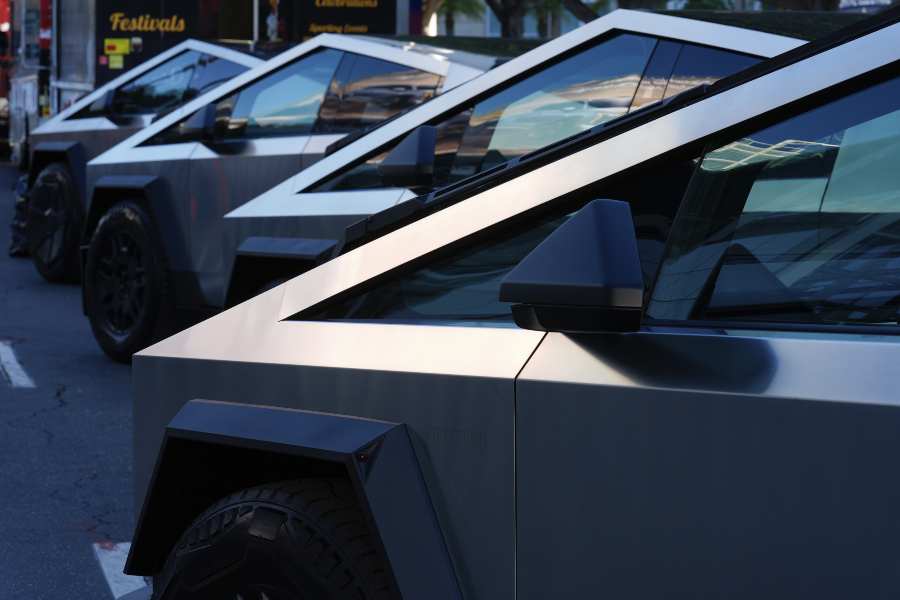Tesla is recalling more than 46,000 of its Cybertruck vehicles following the discovery of a safety issue that could lead to parts of the truck’s outer paneling detaching while the vehicle is in motion. The recall, announced in documentation filed with the National Highway Traffic Safety Administration (NHTSA), affects all Cybertrucks from the 2024 and 2025 model years that were manufactured between November 13, 2023, and February 27, 2025.
The defect specifically involves a section of cosmetic trim known as the cant rail—a stainless steel panel located on the vehicle’s upper side that is adhered using structural adhesive. According to the NHTSA report, the adhesive used during production may fail under certain conditions, allowing the panel to delaminate and potentially separate from the vehicle while it’s being driven. This could result in a dangerous situation on the road, as flying paneling may create hazards for other drivers.
Tesla reported receiving at least 151 warranty claims related to the cant rail issue. Although the company has stated that it is not aware of any accidents, injuries, or fatalities connected to the malfunction, the potential for harm has prompted the automaker to move forward with a proactive recall. Owners of the affected Cybertrucks may notice warning signs such as unusual noise inside the cabin or visible loosening of the exterior panel. In some instances, the defect may be apparent even before the part detaches completely.
As part of the recall, Tesla has pledged to replace the cant rail assembly in all affected vehicles at no cost to owners. Formal notices will be sent to vehicle owners starting May 19, 2025, instructing them on how to proceed with repairs.
The recall adds to a growing list of challenges Tesla has faced with the Cybertruck since its long-anticipated release in November 2023. This marks the eighth recall for the vehicle in just 16 months. Among previous issues were a sticky accelerator pedal that could remain engaged, malfunctions in the tire pressure monitoring system, faulty rearview camera displays, and rear bed trim pieces that could detach during driving. Collectively, these defects have drawn attention to Tesla’s manufacturing practices and raised concerns about the durability and safety of the Cybertruck, which has already had its launch delayed by two years.
The Cybertruck, with its unconventional, angular design and stainless steel exoskeleton, has been a bold venture for Tesla and a centerpiece of its efforts to redefine the electric truck market. However, the use of nontraditional materials and designs has introduced new engineering challenges. The stainless steel bodywork, while durable, poses complexities in production and repair, and the cant rail issue highlights the potential consequences of those difficulties when components fail to perform as intended under real-world conditions.
Despite these setbacks, Tesla has continued to scale up production of the Cybertruck at its Gigafactory in Austin, Texas. The company has not indicated that the recall will delay future deliveries. Still, industry analysts say the frequency of issues reported in such a short period is concerning. Former NHTSA official David Friedman commented that for a vehicle as prominent as the Cybertruck, repeated quality control problems could erode public confidence. “The novelty of the design doesn’t exempt a manufacturer from meeting basic safety and performance standards,” Friedman noted. “If anything, it raises the bar.”
Tesla CEO Elon Musk has previously acknowledged the Cybertruck’s complexity, calling it the most difficult vehicle the company has attempted to bring to market. Musk has cited the unique exoskeleton construction and material choices as contributing to manufacturing hurdles. While the design has drawn admiration from enthusiasts for its futuristic aesthetic and rugged build, critics have pointed out that the unconventional approach may be coming at the cost of reliability.
The competition in the electric truck segment has been heating up, with legacy automakers like Ford and startups like Rivian gaining ground. Ford’s F-150 Lightning and Rivian’s R1T have both launched with a more traditional pickup design, and both companies have emphasized practical utility and consistent performance in their marketing. The frequent recalls of the Cybertruck could hand competitors an advantage by reinforcing perceptions that Tesla’s offering, while innovative, is still unpolished.
As consumer expectations for electric vehicles continue to rise, Tesla will need to demonstrate that it can meet rigorous safety and quality benchmarks, especially for vehicles marketed as utilitarian and adventure-ready. The growing emphasis on regulatory scrutiny and the importance of consistent reliability in a maturing EV market make quality control a top priority—not just for Tesla, but for the entire industry.
Meanwhile, Cybertruck owners are urged to remain vigilant for any signs of panel separation and to act promptly upon receiving recall notifications. For now, Tesla’s offer to replace the faulty cant rail assemblies at no charge provides a path toward resolving the immediate issue. However, the automaker’s broader challenge lies in regaining the trust of consumers who expect not only cutting-edge design but also dependability and long-term durability from their vehicles.
As the May 19 notification date approaches, more information is expected from Tesla and regulatory authorities about the logistics of the recall and whether further action will be necessary to address additional manufacturing or design flaws in the Cybertruck lineup. Until then, the recall serves as yet another reminder that innovation must always be matched by execution—and that safety must remain paramount in the pursuit of automotive breakthroughs.

